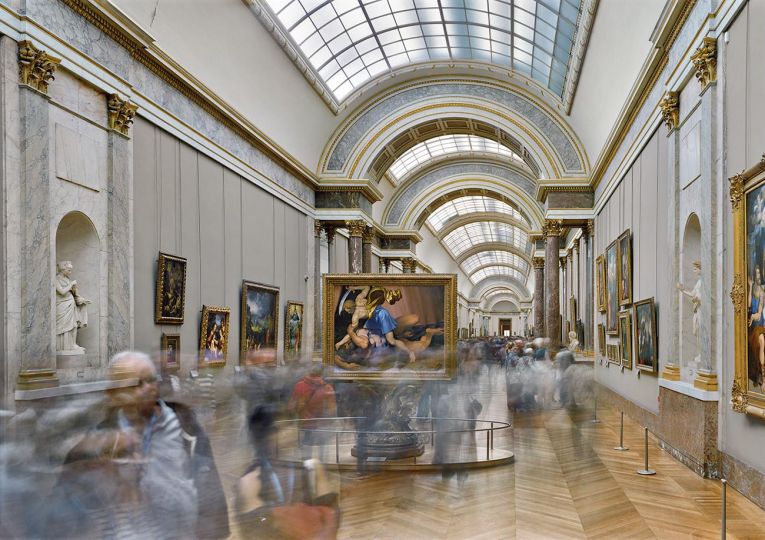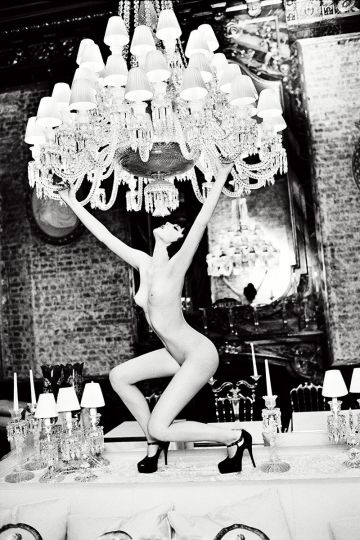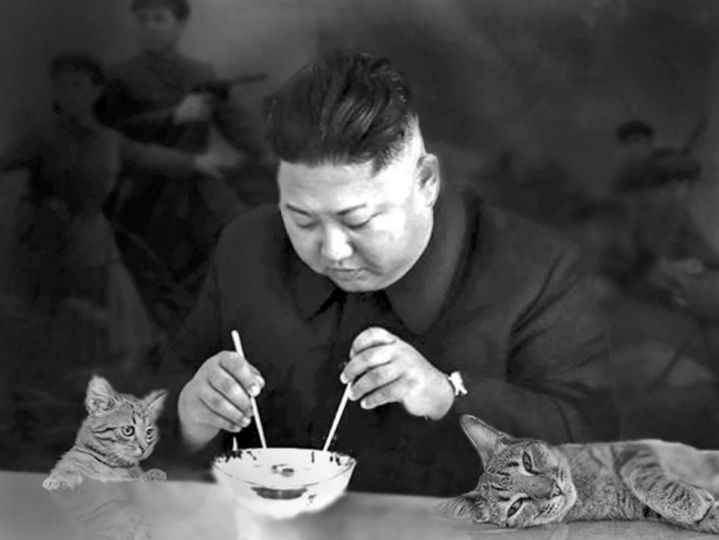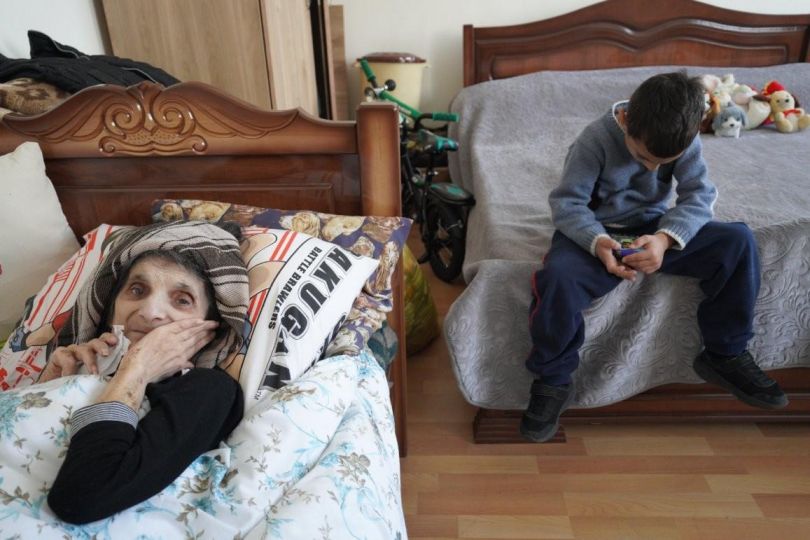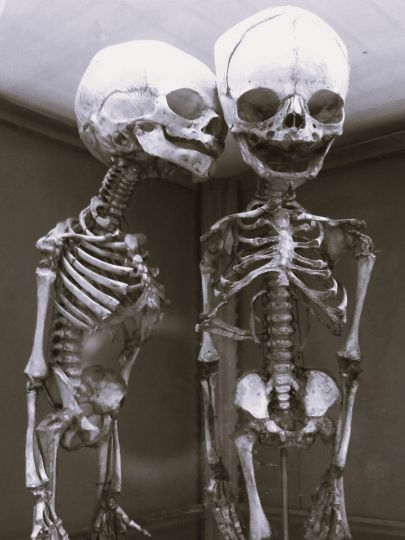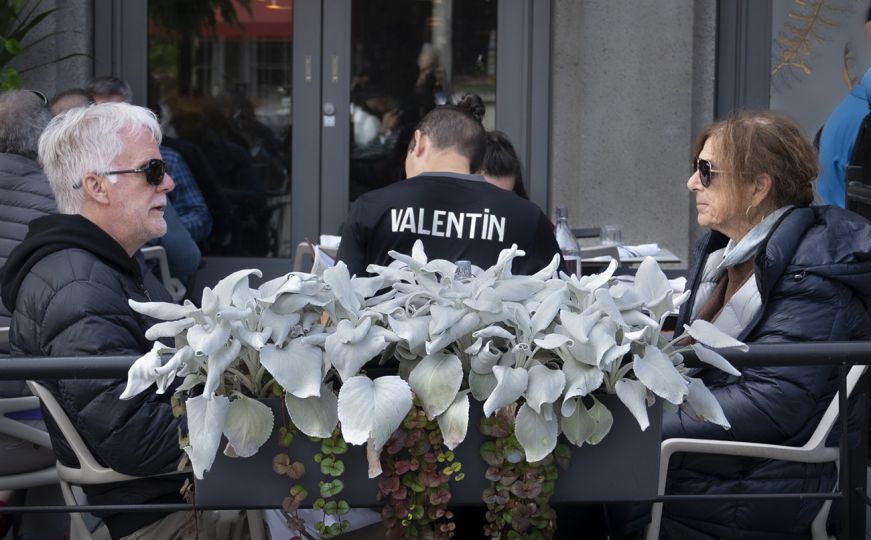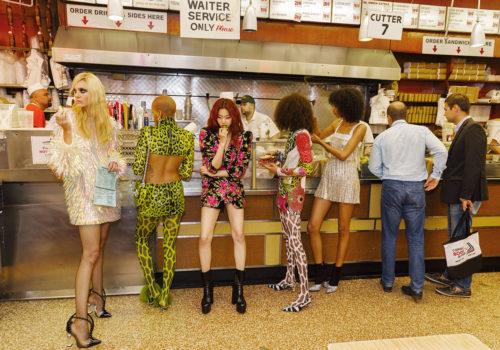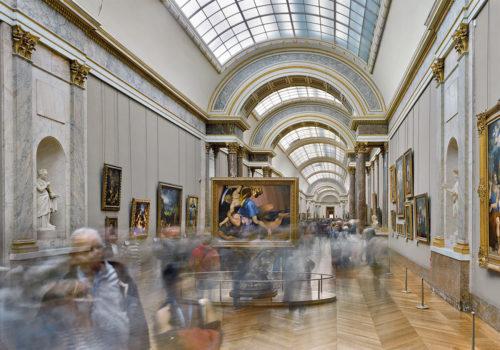Yang Yankang was born in Anshun city of Guizhou Province, the name Anshun dates back to the Ming Dynasty with a connotation of pacifying or bringing peace to the usually troubled area. What would be the pathway to become the only Chinese photographer to receive twice the Henri Nannen Photography Award (*)? It all started when in 1985 Yang got a handyman job in the office of the first Chinese photography magazine in Shenzhen, there he learned photography, mostly through reading and looking at published photographs, and talking to senior photographers, until the day he picked up a camera himself. Between 1991 and 2001 he spent a decade in the Shaanxi province documenting the rural Catholics. When exhibiting his work at the 1st Pingyao Photography Festival his pictures drew the attention of Christian Caujolle, the founder of Paris VU’ Agency who signed him on the spot. Then Jean-François Leroy the founder of VISA Photo Festival invited him to show at the 2002 edition in Perpignan. Yang’s Chinese Catholic pictures by 2004 were published in the German GEO magazine, which gave Yang the chance to win the Henri Nannen Photography Award and recognition in the world.
When I first met Yang Yankang at the Pingyao Photo Festival, I was also impressed by his rural Catholics, as religion is a sensitive subject in China, and because spirituality has always been my personal subject of research in photography. I was also curious of how a Chinese photographer not born or raised in the Christian culture could capture the profound essence of Christianity in his pictures. In every picture, someone familiar with Christianity could recognize the basic components of the religious symbolism: from the crucifix to the lamb, from the communion prayer to the funeral procession. The moving part was that Yang Yankang himself has studied the Bible and learned all the rites. His loyalty to the faithful was so deep that when he learned of the decease of a brother priest he would travel back to their side to attend the funerals. He was sincerely and totally immersed into the spirit and the physical practice of the Chinese rural Catholics.
When we look carefully into Yang Yankang’s photography, in both of his works on the Christian or the Buddhist followers, there is an undeniable sense of brotherhood, of joyous familiarity and humanity that comes from his real immersion into the quotidian that he shared with his subjects. Yang himself said that what he wanted to photograph was “the relationship between Mother Nature, faith and the sacred”. For him, “Tibet is so close to the sky, it is only natural that the Tibetan people have a proximity with the sacred.” Which gives his Tibetan images this luminosity, bright and sunny tone, even in the most humble and barren human settings. His purpose consists of documenting the interaction between faith and daily life focusing on the monks and the pilgrims. All in all the merit of Yang Yankang is that he appears to be the only photographer in China that has been consistently exploring the spiritual in photography, and that is valuable enough in the Chinese society today that is obsessed with monetary gains, material possession and enjoyment.
The Chinese title of his series is translated into English as “Reflections of the Soul”, but in Chinese characters there are “xin 心= heart” and “xiang象 = symbol”, as if Yang Yankang invites us to look beyond the concrete representation, beyond the image, for what lies behind or above the physical, to search for the inside, the unseen, the “meta”- physical. The “Heart Sutras” represents this selection of thirty prints, each image is a “sutra”, a mantra, a prayer or a poem to the sacred.
Let’s take this iconic image of the exhibition that shows a little monk sitting while reciting the Buddhist sutras while behind the curtain we can see the shadow of another monk extending his hand. There are light and shadow, a left side and a right side, one monk sitting and one standing, a divide between two spaces while the whole space is one. The space symbolizes the Buddhist concept of nothingness (kong空 = emptiness), the little monk is here but at the same time the other monk is not here, making the picture purely existentialist in the sense of Being and Nothingness, emptiness is existence, existence is emptiness,空即是色,色即是空. The conch that the two monks were holding is said to represent the proclamation of the Dharma teaching, but the conch is the perfect symbol of emptiness, it is because it is empty that it is a conch. Being a conch is being nothing. About this quasi perfect picture of a nun holding a white dove, Yang Yankang said: “I was in the mountainous area in Sichuan when I chanced upon a group of monks who were setting free doves they had just bought at the market. As the doves took off in flight I saw this nun covered in a shabby robe standing in the cornfield holding a white dove on her chest, the clouds at that moment gathered in the background to compose a wonderful scene. I thought the Buddha has shone his light on me.” Releasing birds in the wild is a ritual in Buddhism that corresponds to the precept of non-violence, and the white dove is per se a strong enough symbol. Finally the universality in Yang Yankang’s photography is that we can see the shadows of Henri Cartier-Bresson, Mario Giacomelli and Sebastião Salgado everywhere.
Now that he has put an end to the Tibetan quest, Yang Yankang says he will turn his eye to the Chinese Muslims, mainly in the Gansu, Ningxia and Qinghai areas. In the end, what motivates Yang Yankang in his longstanding exploration of Catholicism, Buddhism or Islam, is the only true religion he practices and worships: photography, the faith in light.
Jean Loh / Shanghai September 2015
(*) Henri Nannen (1913-1996) was the founder of the German magazine Stern and publishing group Gruner + Jahr. Endowed with 35,000 EUR the “Henri” award is given annually for the past 10 years to recognized best journalism in independent news reportage, documentary and photo-reportage. Yang Yankang was the recipient of the 2005 Nannen Prize for his “Rural Catholics in China” series and again the 2009 Price in the “Best photo article performance” category for the series “Power of Faith in Tibet” published in Geo Magazine.
YANG Yankang
Born in 1954 in Anshun, Guizhou Province.
Lives in Shenzhen and Chengdu.
Member of Agence VU’ since 2001.
https://www.agencevu.com/photographers/photographer.php?id=84



